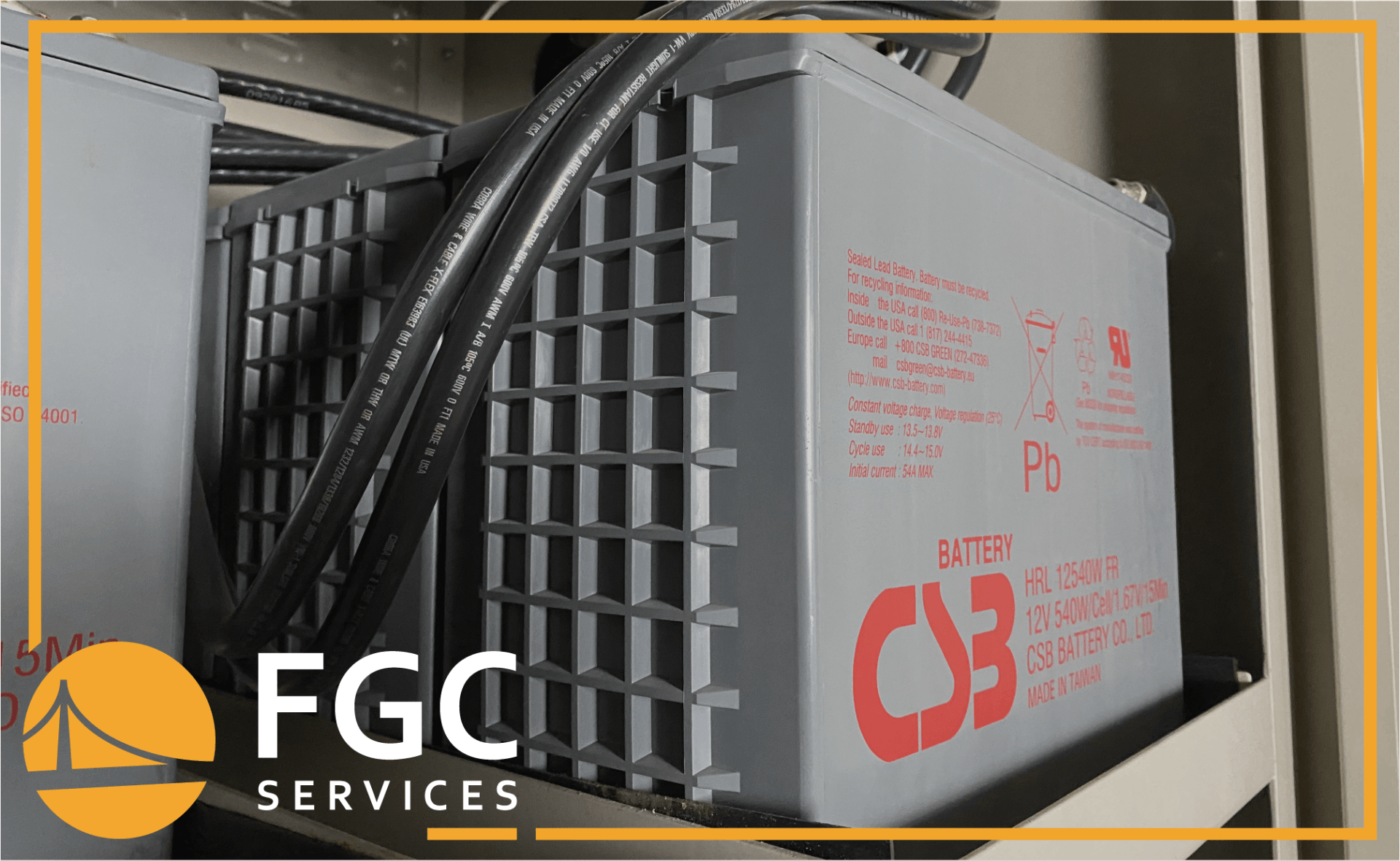Flywheel UPS: UPS Energy Storage
23 November 2022
Share this article:
When going to purchase an uninterruptible power supply system (UPS), there is much more to consider than the brand and the price. UPS systems come in different types of configurations based on how the power flows through the system and what functions the system provides.
These functions can include offering surge protection, managing power fluctuations, providing overcharge protection, and many other features. To determine which UPS system to purchase, you need to consider the application's power and function requirements.

What is Flywheel UPS Energy Storage?
A Flywheel UPS energy storage system uses stored kinetic energy that is transformed into DC power. The DC power is sent to the UPS that converts the DC energy into AC power that goes to the connected devices. This kinetic energy is generated by the flywheel, which is a rotary mechanical device that spins as the rotation creates electrical energy that becomes converted into kinetic energy.
When it comes to flywheel UPS, they do not contain batteries such as lead acid, lithium, or nickel that are commonly used in other UPS systems. This setup makes the flywheel safer than other types of battery chemistries that experience thermal runaway, such as lithium batteries.
Thermal runaway occurs when the battery chemistry becomes unstable to the point where the thermal temperatures inside the cells rapidly rise in a short amount of time. Energy is released by the battery that causes the temperatures to rise higher, exceeding safety thresholds. In time, the battery may explode or catch fire.
Many battery systems that experience thermal runaway will have battery management systems (BMS) to monitor the battery's temperature and other functions to ensure they stay within safety parameters. For a flywheel UPS, a BMS system is not required since there are no battery cells present.
How Does Flywheel UPS Technology Work?
A flywheel UPS works by using a rotor made of carbon fiber, steel, or carbon fiber composite. The rotor functions as a generator, motor, and energy storage system. The flywheel will spin at speeds of up to 37,000 revolutions per minute (RPM).
Some flywheels have mechanical bearings, while newer flywheel technologies contain magnetic bearings to create the rotational force. Magnetic bearings create a higher energy density.
The AC power comes into the UPS from the main energy source. A typical flywheel setup will have a rectifier AC/DC and a static bypass. If there is a power fluctuation, over-voltage, or power failure, the DC/AC flywheel turns the kinetic energy into DC power that goes through the DC bus and into the inverter DC/AC. The inverter converts the DC power into AC current that is then sent from the flywheel UPS to the connected devices to run them.
A flywheel UPS offers roughly 10 seconds to 15 seconds of power and can fully recharge within 15 minutes. Some units are capable of a 2-minute recharge.
Who Should Use This Type of UPS Energy Storage?
Flywheel UPS units are usually reserved for specific use applications. A reason for this is because the UPS energy storage only runs for about 10 seconds to 15 seconds, only allowing enough time for a changeover to other backup power sources. Other applications for a flywheel UPS may include handling power sags, dips, or transient over-voltages.
Some industries that may benefit from a flywheel UPS may include oil and gas. In these situations, the flywheel UPS can withstand harsh environments and temperatures where a battery may degrade, lose capacity, or experience damage that leads to thermal runaway. Manufacturing factories may also use the flywheel UPS if the working environment may cause damage to battery-operated UPS units.
The wind turbine industry and power grid companies may also use flywheel UPS systems. Wind turbines can store generated energy during off-peak hours or days when there are high wind speeds. Grid power applications consist of using the flywheel UPS to regulate grid frequency and to balance supply and demand changes.
A range of other industries may use a flywheel UPS if the energy from the main power source fluctuates and is unstable, as this type of UPS energy storage can clean up the incoming power to create a more stable sine wave as output current.
Specs of Flywheel UPS Energy Storage
Flywheel UPS energy storage systems have unique specifications that may create benefits to a company. These specifications include the cycle life, lifespan, temperature requirements, discharge/recharge rates, size, weight, cost, and maintenance requirements.
Cycle Life/Lifespan
A flywheel UPS can last for up to 20 years in operation. It does not have a limit to its cycle life. The energy storage capacity never diminishes from extended use, unlike battery storage UPS systems that will experience cell aging and capacity loss.
Temperature Requirements
These UPS systems can operate in temperatures of up to 104°F for normal environments. For flywheel UPS cabinets that have reduced power ratings (de-rated), the UPS can operate at higher temperatures up to 122°F.
Discharge/Recharge Rates
As discussed earlier, the flywheel UPS will discharge its entire load capacity within 10 seconds to 15 seconds. It is capable of recharging in 2 minutes, but often takes 15 minutes under normal settings.
Size
The size of the flywheel UPS is similar to available sizes offered in battery-type UPS systems. When selecting a size, consider the type of energy capacity needed for applications and the amount of space where the flywheel UPS will be placed.
Weight
A flywheel UPS weighs less than a lead acid UPS and nickel-zinc UPS batteries. The units may have similar weights to lithium-ion battery UPS. For example, a typical 30-inch by 30-inch cabinet could weigh about 1,800 pounds.
Cost
The initial purchase cost for a flywheel UPS is about the same as when purchasing a lead-acid battery. The total cost of ownership is figured out based on continued maintenance and reduced cooling costs, which may lead to savings for the company since you are not constantly replacing batteries.
Maintenance
The maintenance of the flywheel UPS will depend on whether the system operates on mechanical bearings or magnetic bearings. Magnetic bearings offer ease of use and lower maintenance costs. Mechanical bearings have higher maintenance since the bearing must be lubricated and may experience more wear-and-tear during daily use.
UPS Service and Products
Flywheel UPS systems can provide immense benefits for companies that have special applications where short-term backup power or when needing to manage or balance fluctuating power from main power sources. Here at Facility Gateway Critical Systems, we offer UPS maintenance services as well as UPS products to companies. Contact us for more information.
Connect with Us:





